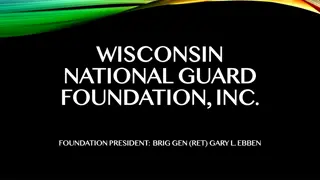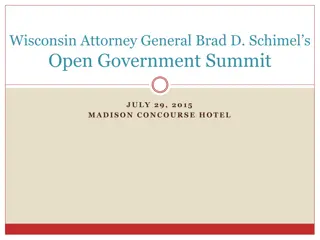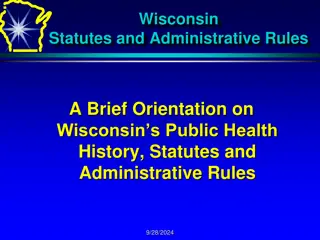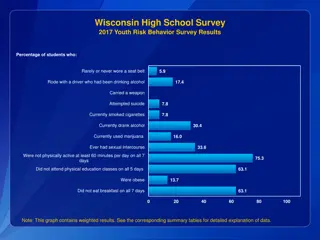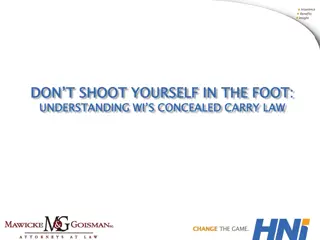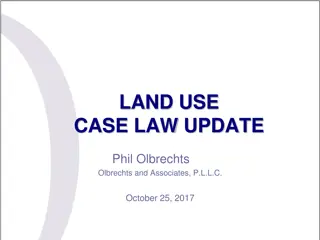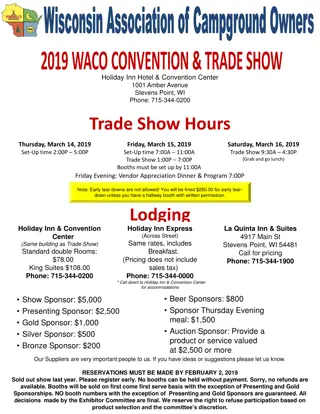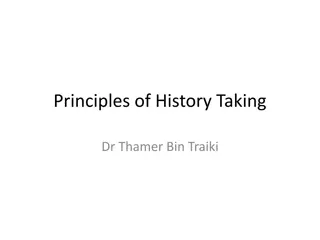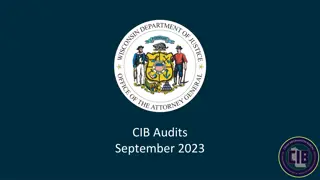Exploring the History of the First People in Wisconsin
Discover the fascinating journey of the Paleo-Indians, the first people to inhabit North America, as they ventured into Wisconsin in pursuit of sustenance and established semi-nomadic lifestyles. Uncover how raw materials like copper, stone, wood, and bone anchored these communities in the region, leading to the formation of diverse tribes such as the Ojibwe in northern Wisconsin. Experience the cultural exchange between French missionaries and Native Americans, marking a pivotal chapter in Wisconsin's rich history.
Download Presentation

Please find below an Image/Link to download the presentation.
The content on the website is provided AS IS for your information and personal use only. It may not be sold, licensed, or shared on other websites without obtaining consent from the author. Download presentation by click this link. If you encounter any issues during the download, it is possible that the publisher has removed the file from their server.
E N D
Presentation Transcript
The First People Our Stories: The History of Marathon County Exhibit Marathon County Historical Society Standards: B.8.2 Employ cause-and-effect arguments to demonstrate how significant events have influenced the past and the present in United States and world history B.8.11 Summarize major issues associated with the history, culture, tribal sovereignty, and current status of the American Indian tribes and bands in Wisconsin
If you couldnt go to the store or a kitchen, how would you get food to eat? Fishing Hunting Gathering
Who Were the First People? The Paleo-Indians were the first people to step foot on North America. They came across the Bering Strait land bridge over 11,000 years ago.
Why did the First People Come to Wisconsin? They came because they were following their dinner, it moved, so they moved. This is called semi- nomadic living. Once the small groups arrived in Wisconsin they continued to hunt game and gather berries, vegetables, and grasses. This is called being a hunter-gatherer.
If the First People were semi-nomadic, why did they stay in Wisconsin? The First People found raw materials they used for tools and trade. Copper, stone, wood, and bone were found.
Why dont we call the Native Americans Paleo-Indians today? The Paleo-Indians broke into smaller groups forming the tribes we know today. One of the prolific cultures in our region was the Great Lakes Copper Culture. Can you infer why they were known as the Copper Culture?
Who was the biggest tribe in Northern Wisconsin? The Ojibwe also known as the Chippewa were the primary occupants of northern Wisconsin. Local tribes also included the Menomonie and Lac du Flambeau. Beginning in the early 1600s French missionaries bartered with the Native Americans for beaver pelts.
Predict: Did the Missionaries and Native Americans get along? The Native Americans embraced trade with the French. The groups formed an alliance, they slowly became dependent on each other s goods. The Native Americans relied on European foods, beads, and metal implements. The Europeans relied on the animal pelts to make pelted hats.
How would you react to the news, you must leave your house immediately? The Native Americans were forced to leave their land and move to reservations. As European settlers and lumber speculators moved to Marathon County, the government moved the original inhabitants from their lands. Are there any reservations close to Marathon County?
How did the First People make canoes? The First People made canoes by hand, look at the pictures to see the process. Make sure to look up for the canoe when you visit the exhibit! Click on this box for a short video on restoring the canoe in the exhibit.
How are the First People related to the Native Americans today? Why did Europeans focus on Wisconsin? How did Europeans change the Native lifestyle? Was it good or bad? Did the Native Americans have a choice to interact with the Europeans? Why or why not? How can you use what you have learned about the relationship between the Europeans and the Native Americans next time you meet a new group of people?


